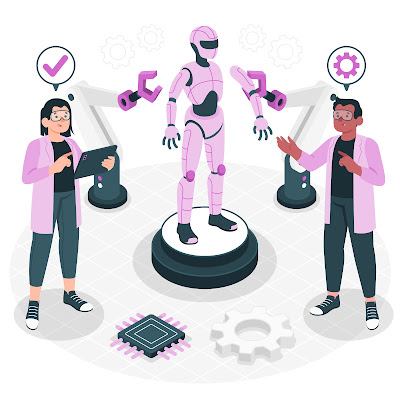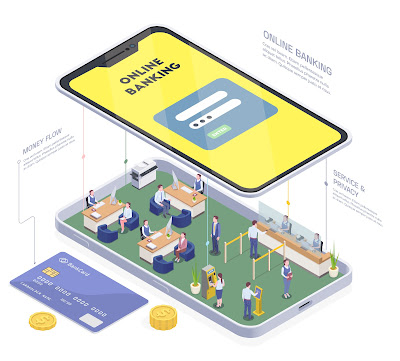In the realm of modern finance, algorithmic trading has emerged as a dominant force, revolutionizing the way investors engage with markets. With the advent of sophisticated technologies, the barriers to entry in algorithmic trading have significantly lowered, paving the way for the development of algorithmic trading applications. However, building such an application entails various costs and considerations, ranging from development to maintenance. In this exploration, we delve into the intricacies of the cost landscape associated with developing an algorithmic trading app.
Understanding Algorithmic Trading:
Before delving into the costs, it's imperative to grasp the fundamentals of algorithmic trading. Algorithmic trading, often referred to as algo trading, involves the execution of trades based on predefined criteria and rules. These rules are typically formulated using mathematical models and algorithms, enabling automated decision-making in trading activities. Algo trading leverages speed, accuracy, and efficiency to capitalize on market opportunities, making it an attractive prospect for investors.
What Is The Algo Trading App Development Process:
Building an algorithmic trading app is a multifaceted endeavor that encompasses various stages, each demanding meticulous attention and expertise. The development process typically includes:
Requirement Analysis: Understanding the client's objectives, trading strategies, and market requirements forms the foundation of the development process.
Design and Architecture: Designing the system architecture and selecting appropriate technologies play a crucial role in ensuring scalability, reliability, and performance.
Algorithm Development: Developing robust algorithms tailored to the client's trading strategies is a core component of the process. This involves extensive testing, optimization, and validation to ensure effectiveness and efficiency.
Integration with Market Data Feeds: Integrating the application with real-time market data feeds is essential for making informed trading decisions. This integration may involve partnering with data providers or developing proprietary data sources.
Execution Platform: Implementing the execution platform, including order management systems (OMS) and execution management systems (EMS), is critical for seamless trade execution.
Risk Management: Incorporating risk management tools and mechanisms to mitigate potential risks associated with algorithmic trading is paramount for safeguarding investments.
Backtesting and Optimization: Conducting rigorous backtesting and optimization of trading strategies using historical data helps validate performance and fine-tune algorithms.
Regulatory Compliance: Ensuring compliance with regulatory requirements and industry standards is non-negotiable in algorithmic trading development.
Factors Influencing Costs:
The cost of building an algorithmic trading app can vary significantly based on several factors:
Complexity of Algorithms: The complexity and sophistication of trading algorithms significantly impact development costs. More intricate algorithms may require extensive research, testing, and optimization, thus increasing development time and expenses.
Data Infrastructure: The cost of acquiring and maintaining real-time market data feeds can be substantial, especially for high-frequency trading strategies that rely on ultra-low latency data.
Technology Stack: The choice of technology stack, including programming languages, frameworks, and infrastructure components, influences development costs. Utilizing cutting-edge technologies may incur higher upfront costs but can enhance performance and scalability in the long run.
Integration Requirements: Integrating the trading application with third-party APIs, data providers, and trading platforms entails additional development effort and costs.
Regulatory Compliance: Ensuring compliance with regulatory frameworks such as MiFID II, GDPR, and SEC regulations requires expertise and resources, adding to the overall development costs.
Security Measures: Implementing robust security measures to protect sensitive financial data and prevent unauthorized access is paramount but can contribute to higher development costs.
Scalability and Performance: Building a scalable and high-performance trading infrastructure capable of handling increasing trade volumes and market volatility may necessitate additional investment in hardware, infrastructure, and optimization.
Maintenance and Support: Post-deployment maintenance, updates, and ongoing support services are essential for ensuring the reliability and functionality of the trading application. Budgeting for continuous maintenance and support is crucial for long-term success.
Cost Breakdown:
While it's challenging to provide a precise cost estimate without specific project requirements, a rough breakdown of costs associated with building an algorithmic trading app may include:
Development Costs: This includes expenses related to software development, algorithm design, testing, and optimization. Development costs can vary based on the complexity and scope of the project, as well as the hourly rates of developers and engineers involved.
Data Costs: Acquiring and maintaining real-time market data feeds from exchanges, data providers, and APIs can incur significant expenses, especially for high-frequency trading strategies.
Infrastructure Costs: Investing in robust infrastructure, including servers, networking equipment, and cloud services, is essential for ensuring optimal performance, reliability, and scalability of the trading platform.
Regulatory Compliance Costs: Compliance with regulatory requirements necessitates investment in legal counsel, compliance officers, and regulatory technology solutions to ensure adherence to relevant laws and regulations.
Security Costs: Implementing robust security measures, including encryption, authentication, and intrusion detection systems, requires dedicated resources and investment in cybersecurity technologies.
Maintenance and Support Costs: Budgeting for ongoing maintenance, updates, and support services is essential for addressing bugs, implementing new features, and ensuring the smooth operation of the trading application.
Choosing the Right Partner:
Given the complexity and specialized nature of algorithmic trading development, partnering with a reputable Algo trading app development company is advisable. A reliable partner with expertise in algorithmic trading, financial markets, and technology can provide invaluable guidance, technical know-how, and support throughout the development lifecycle. When selecting a development partner, consider factors such as industry experience, track record, technological capabilities, and commitment to quality and compliance.
Conclusion:
Building an algorithmic trading app involves navigating through a myriad of costs and considerations, ranging from development to maintenance. By understanding the various factors influencing costs and partnering with the right development team, investors can embark on the journey of algorithmic trading with confidence, leveraging technology to gain a competitive edge in today's dynamic financial markets. While the initial investment may seem substantial, the potential benefits of algorithmic trading in terms of efficiency, accuracy, and profitability make it a compelling proposition for forward-thinking investors and financial institutions.
Read also :
1. Cost to Develop Algo Trading App like Pionex
2. Cost to Develop OANDA Algo Trading App





